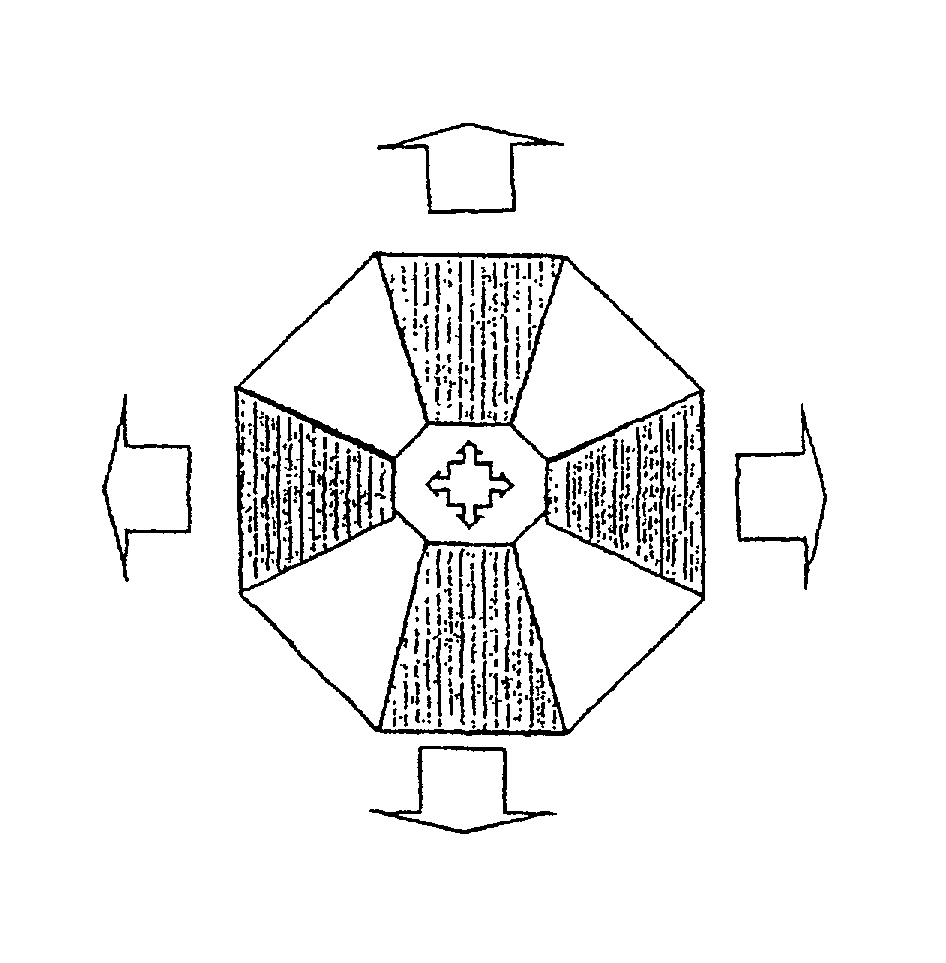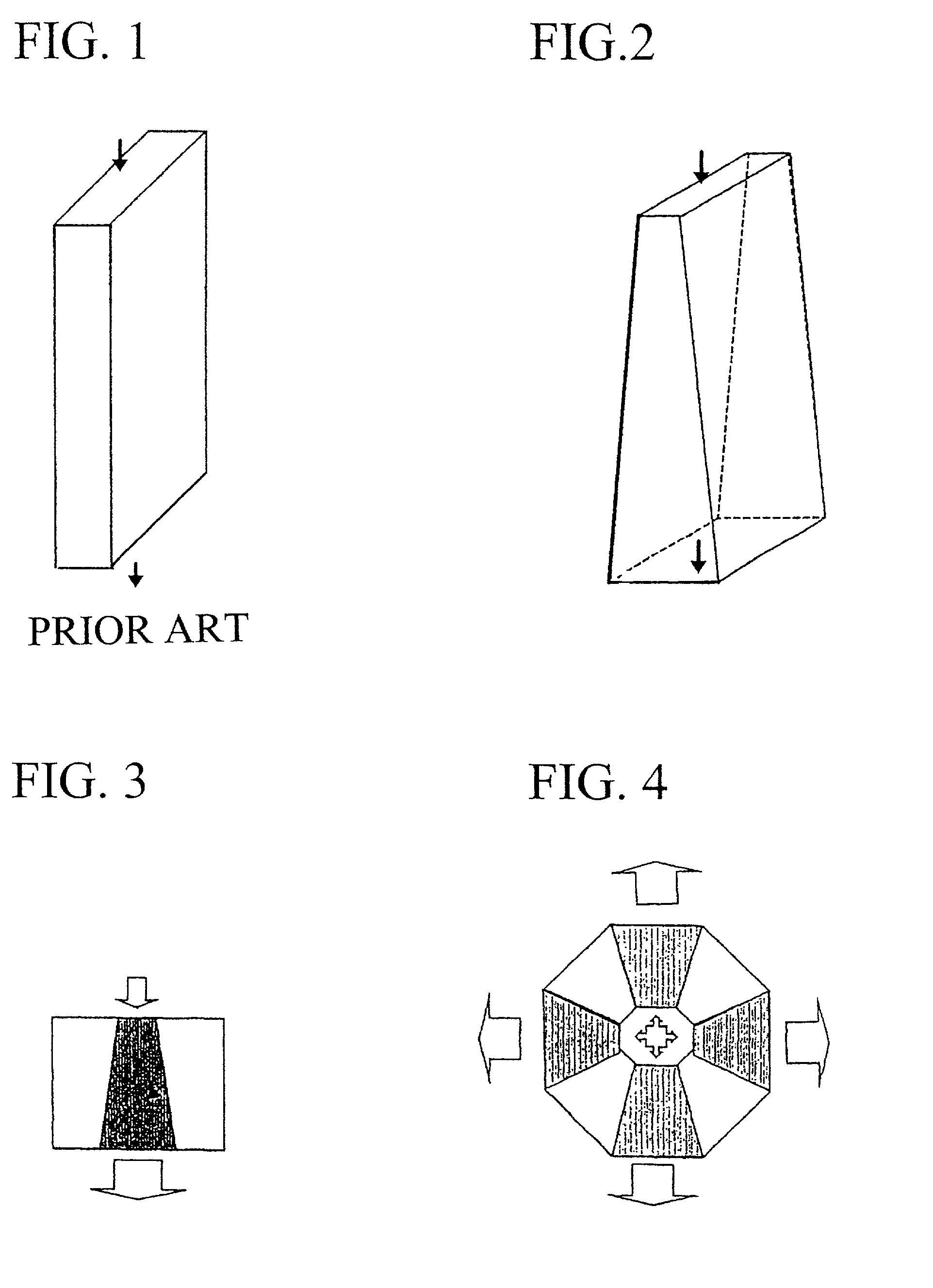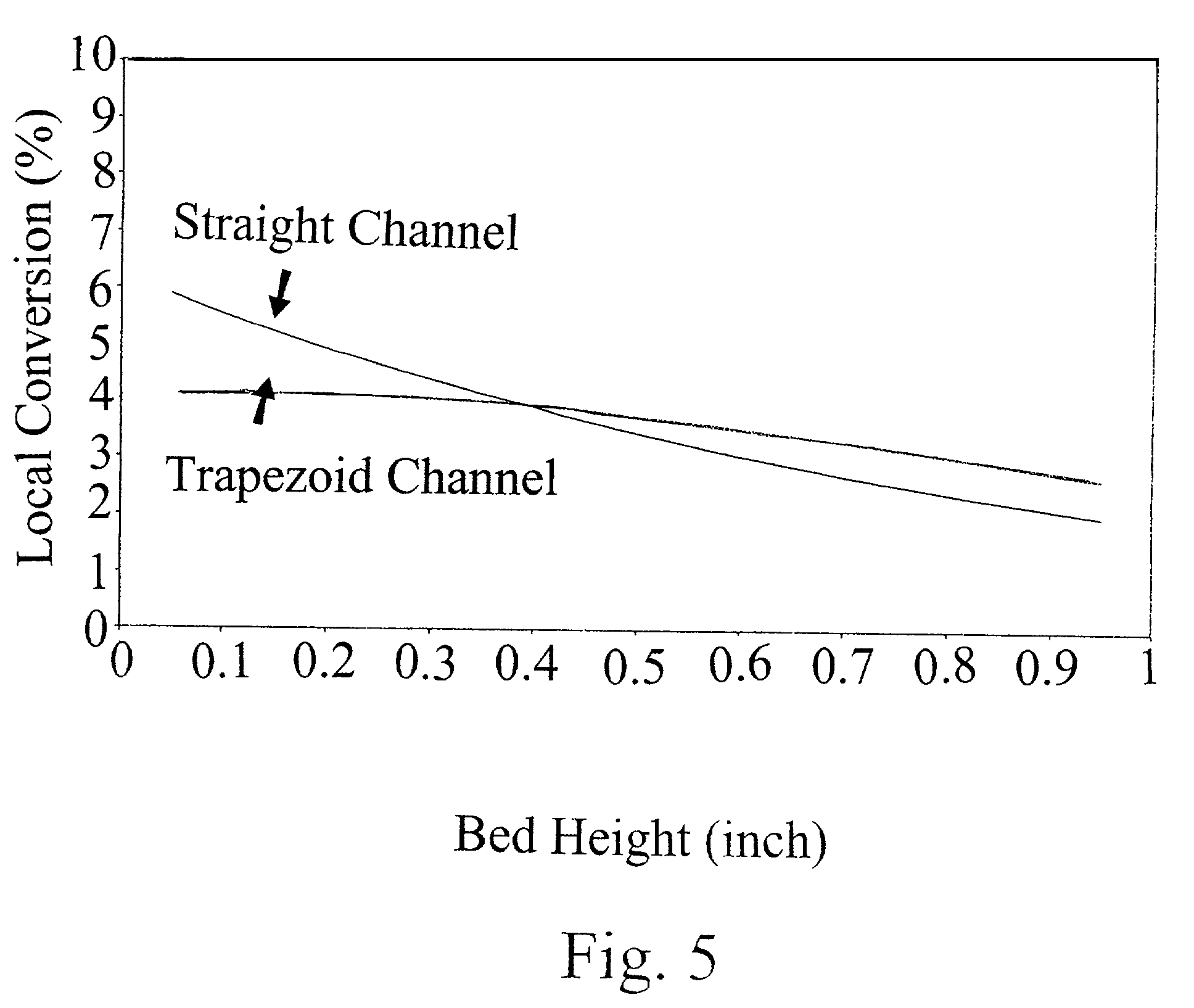Reactors having varying cross-section, methods of making same, and methods of conducting reactions with varying local contact time
a technology of chemical reactors and cross-sections, applied in physical/chemical process catalysts, laboratory glassware, instruments, etc., can solve the problems of low selectivity of desired products, lack of uniform temperature in the axial direction, and fast catalyst deactivation, so as to improve the coupling between chemical reaction and heat transfer, linear velocity or local contact time can be gradually increased or decreased, and the temperature distribution is uniform. uniform
- Summary
- Abstract
- Description
- Claims
- Application Information
AI Technical Summary
Benefits of technology
Problems solved by technology
Method used
Image
Examples
examples
Model Conditions and Catalyst
[0042]Since Fischer-Tropsch synthesis (“FTS”) is a highly exothermic reaction, it is a good model system to validate the concept of the present invention. FTS generally requires temperature control in a narrow range to avoid excessive methane production and catalyst deactivation. Microchannel reactors with straight and trapezoidal channel geometries (table 1) with jacketed active cooling system can be employed to collect reaction kinetics in various process conditions. Porous media containing catalytic materials are packed in the microchannel reactors. The catalysts are supported by packing thin layers of quartz wool and held by metal foams in both ends in a straight channel with the dimensions described in Table 1. Catalyst loading amount is 0.22 gram. The catalyst for this experiment can be prepared as follows. First, acidic gamma-alumina support powder (Engelhard) is ground and sieved to between 80- and 100-mesh (150 to 180-micron), and calcined (stab...
PUM
| Property | Measurement | Unit |
|---|---|---|
| height | aaaaa | aaaaa |
| width | aaaaa | aaaaa |
| height | aaaaa | aaaaa |
Abstract
Description
Claims
Application Information
 Login to View More
Login to View More - R&D
- Intellectual Property
- Life Sciences
- Materials
- Tech Scout
- Unparalleled Data Quality
- Higher Quality Content
- 60% Fewer Hallucinations
Browse by: Latest US Patents, China's latest patents, Technical Efficacy Thesaurus, Application Domain, Technology Topic, Popular Technical Reports.
© 2025 PatSnap. All rights reserved.Legal|Privacy policy|Modern Slavery Act Transparency Statement|Sitemap|About US| Contact US: help@patsnap.com



